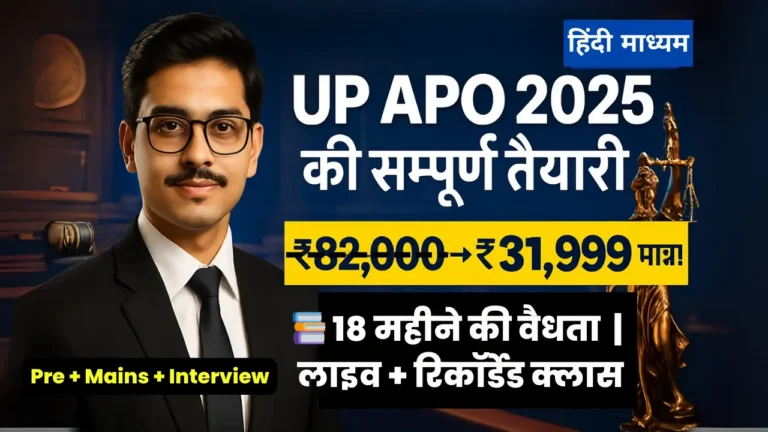What is the Right to Equality for Women Officers in India’s defense forces? Doon Law Mentor analyzes the Supreme Court’s landmark rulings, ensuring gender parity in permanent commissions and command roles. Essential for law students studying constitutional law and gender equality.
Table of Contents
Introduction
Can women officers in India’s defense forces lead combat units, secure permanent commissions, and enjoy equal benefits as their male counterparts? The Right to Equality for Women Officers has been a transformative issue, reshaped by the Supreme Court’s landmark rulings. These decisions have dismantled gender-based barriers, affirming constitutional principles of equality and non-discrimination. For lawyers and law students, understanding the Right to Equality for Women Officers is crucial for grasping India’s evolving constitutional jurisprudence, particularly in the context of gender equality and national security. This educational article, crafted by Doon Law Mentor, provides a comprehensive analysis of the Right to Equality for Women Officers exploring key Supreme Court judgments, constitutional provisions, case studies, and contemporary challenges, with exam-ready insights for UPSC and judiciary aspirants.
Constitutional Framework: The Right to Equality
The Right to Equality for Women Officers is rooted in India’s Constitution, which enshrines equality as a fundamental principle. Key provisions include:
- Article 14: Guarantees equality before the law and equal protection of laws, prohibiting arbitrary discrimination.
- Article 15: Prohibits discrimination on grounds of sex, among others, ensuring the Right to Equality for Women Officers in public employment.
- Article 16: Ensures equality of opportunity in public employment, critical for defense forces.
- Article 33: Allows Parliament to restrict fundamental rights for armed forces members to ensure discipline, but only to the extent necessary.
The Supreme Court has interpreted these provisions to uphold the Right to Equality for Women Officers, rejecting gender stereotypes as unconstitutional. The landmark case Secretary, Ministry of Defence v. Babita Puniya (2020) and subsequent rulings have been pivotal in this regard.
Historical Context: Women in India’s Defense Forces
Historically, women in India’s defense forces were limited to Short Service Commissions (SSC), serving 10–14 years without eligibility for Permanent Commission (PC), which offers a full career until retirement, including pensions and promotions. Until 2008, only the Army’s legal and education wings allowed women PCs. This disparity denied women the Right to Equality for Women Officers, limiting career prospects and leadership roles. The government’s arguments often cited physiological limitations, motherhood, and societal norms, perpetuating gender biases.
The Right to Equality for Women Officers gained traction through legal challenges, starting with writ petitions filed in 2003 and 2006 by women officers, including advocate Babita Puniya, before the Delhi High Court. The 2010 Delhi High Court ruling mandated PCs for women, but implementation lagged, prompting Supreme Court intervention.
Read More: Powers of the President in India: Roles, Limits, and Relevance
Landmark Supreme Court Rulings on the Right to Equality for Women Officers
1. Secretary, Ministry of Defence v. Babita Puniya (2020)
- Context: The Supreme Court addressed the government’s appeal against the 2010 Delhi High Court ruling granting PCs to women SSC officers. The government argued that women were unfit for PCs due to physiological limitations and operational constraints.
- Ruling: On February 17, 2020, Justices D.Y. Chandrachud and Ajay Rastogi upheld the Right to Equality for Women Officers, directing the government to:
- Grant PCs to all women SSC officers, irrespective of service years or retirement status.
- Allow women eligibility for command postings on par with men.
- Reject gender stereotypes as unconstitutional, citing Articles 14, 15, and 16.
- Key Observations:
- The Court condemned the government’s reliance on “discriminatory gender stereotypes,” stating that arguments about women’s physiological limitations or family obligations were “constitutionally flawed.”
- Highlighted exemplary service by women officers, like Lieutenant Colonel Sophia Qureshi, who led a multinational exercise in 2016, proving women’s capability.
- Emphasized that denying the Right to Equality for Women Officers was an affront to constitutional values and national pride.
- Impact on Right to Equality for Women Officers: Ensured women could serve full tenures, access promotions, and secure pensions, dismantling barriers to leadership roles.
2. Lt. Colonel Nitisha and Ors v. Union of India (2021)
- Context: Women SSC officers challenged the Army’s evaluation criteria for PCs, alleging systemic discrimination. The criteria, including medical fitness and Annual Confidential Reports (ACRs), disproportionately disadvantaged women.
- Ruling: On March 25, 2021, the Supreme Court, led by Justice D.Y. Chandrachud, held that the Army’s criteria were “systemically discriminatory,” violating the Right to Equality for Women Officers. The Court ordered:
- Reconsideration of rejected officers within two months, using fair criteria.
- Review of ACR evaluation processes to eliminate gender bias.
- Key Observations:
- The Court noted that ACRs were influenced by the lack of PC options for women at the time, unfairly impacting their assessments.
- Stressed that “a superficial sense of equality is not in the true spirit of the Constitution,” urging systemic reforms to uphold the Right to Equality for Women Officers.
- Impact: Corrected discriminatory evaluation practices, ensuring fair access to PCs.
Read More: Law and Social Solidarity Explained in Contemporary India
3. Lt. Selina John v. Union of India (2024)
- Context: Lt. Selina John, a Military Nursing Service (MNS) officer, was discharged in 1988 due to marriage, under a discriminatory rule (Army Instruction No. 61 of 1977). She challenged this before the Armed Forces Tribunal, which ruled in her favor.
- Ruling: On February 14, 2024, Justices Sanjiv Khanna and Dipankar Datta declared the discharge “wrong and illegal,” awarding Rs 60 lakh in compensation for “coarse gender discrimination.”
- Key Observations:
- The rule, applicable only to women, was “manifestly arbitrary” and violated Articles 14 and 15.
- Reinforced the Right to Equality for Women Officers by invalidating gender-based terminations.
- Impact: Set a precedent against discriminatory service conditions, strengthening protections for women officers.
4. Kush Kalra v. Union of India (2021)
- Context: Advocate Kush Kalra challenged the exclusion of women from the National Defence Academy (NDA) entrance exam, citing gender discrimination.
- Ruling: On August 18, 2021, Justices S.K. Kaul and Hrishikesh Roy issued an interim order allowing women to appear for the NDA exam, stating that the policy was “based on gender discrimination.”
- Key Observations:
- Criticized the Army’s resistance to gender-neutral policies, noting that the Navy and Air Force were more progressive.
- Emphasized that the Right to Equality for Women Officers includes equal access to training and entry points.
- Impact: Opened NDA to women, advancing the Right to Equality for Women Officers at the entry level.
Constitutional Analysis: Balancing Article 33 and Equality
The Right to Equality for Women Officers intersects with Article 33, which allows Parliament to restrict fundamental rights for armed forces members to ensure discipline. The Supreme Court has narrowly interpreted Article 33, ensuring that restrictions are justified and do not violate constitutional equality. In Babita Puniya, the Court rejected the government’s claim that operational compulsions justified excluding women from PCs, emphasizing that such arguments were based on “sex stereotypes” and not valid under Article 33.
The Court’s approach aligns with earlier cases like Anuj Garg v. Hotel Association of India (2008), which struck down gender-based restrictions as unconstitutional, and Joseph Shine v. Union of India (2018), which invalidated laws rooted in patriarchal notions. These precedents reinforce that the Right to Equality for Women Officers cannot be curtailed arbitrarily, even in the name of national security.
Contemporary Developments
The Right to Equality for Women Officers continues to evolve:
- Implementation of PCs: Following the 2020 ruling, the Army established the Number 5 Selection Board in September 2020 to induct eligible women officers into PCs. By 2025, over 600 women officers have been granted PCs, with some promoted to Colonel and Brigadier ranks.
- NDA Inclusion: Women cadets joined the NDA in 2022, with the first batch graduating in 2025, marking a milestone in the Right to Equality for Women Officers.
- Command Roles: Women officers like Colonel Sophia Qureshi have led multinational exercises, proving their capability in command roles.
- Judicial Oversight: The Supreme Court continues to monitor compliance, as seen in 2023 when it warned the Army against discriminatory promotion practices.
- BNS and BNSS: While primarily criminal laws, the Bharatiya Nyaya Sanhita, 2023 (BNS) and Bharatiya Nagarik Suraksha Sanhita, 2023 (BNSS) indirectly support the Right to Equality for Women Officers by ensuring fair legal processes in military justice, such as court-martials.
Challenges to the Right to Equality for Women Officers
Despite progress, challenges persist:
- Systemic Bias: The Supreme Court noted in Nitisha that evaluation criteria often reflect patriarchal structures, requiring ongoing reforms.
- Combat Role Restrictions: Women are still excluded from combat arms like the Armoured Corps and Infantry, limiting the full scope of the Right to Equality for Women Officers.
- Cultural Resistance: Male officers’ reluctance to accept women in command roles, as noted in Babita Puniya, hinders integration.
- Promotion Delays: Women officers face delays in promotions to higher ranks, as highlighted in 2023 by the Supreme Court.
- Judicial Pendency: With 4.8 crore pending cases in 2025, delays in resolving disputes over the Right to Equality for Women Officers persist.
Role of Legal Professionals
Lawyers and law students can advance the Right to Equality for Women Officers by:
- Public Interest Litigation (PIL): Challenging discriminatory policies, as seen in Kush Kalra.
- Policy Advocacy: Pushing for gender-neutral recruitment and promotion criteria.
- Public Awareness: Educating society about the Right to Equality for Women Officers to shift mindsets.
- Judicial Support: Assisting courts in reviewing military policies to ensure constitutional compliance.
Table: Key Supreme Court Rulings on Right to Equality for Women Officers
| Case Name | Year | Key Ruling | Impact on Right to Equality for Women Officers |
|---|---|---|---|
| Babita Puniya | 2020 | Granted PCs and command roles to women | Ensured equal promotions and pensions |
| Nitisha | 2021 | Struck down discriminatory evaluation criteria | Promoted fair PC assessments |
| Selina John | 2024 | Declared marriage-based discharge illegal | Invalidated gender-based terminations |
| Kush Kalra | 2021 | Allowed women in NDA exams | Expanded entry-level equality |
This table, by Doon Law Mentor, summarizes the Right to Equality for Women Officers.
Conclusion: A Triumph for Constitutional Equality
The Right to Equality for Women Officers in India’s defense forces has been transformed by the Supreme Court’s landmark rulings, particularly Babita Puniya (2020), which dismantled gender-based barriers to permanent commissions and command roles. These decisions uphold Articles 14, 15, and 16, rejecting stereotypes and ensuring equal opportunities. Despite challenges like cultural resistance and combat role exclusions, the Right to Equality for Women Officers is a beacon of constitutional morality, inspiring future generations. Legal professionals must continue advocating for systemic reforms to fully realize this right. Visit Doon Law Mentor at doonlawmentor.com to explore constitutional law further!
Key Takeaways:
- The Right to Equality for Women Officers is enshrined in Articles 14, 15, and 16, upheld by landmark rulings.
- Babita Puniya (2020) granted women PCs and command roles, rejecting gender stereotypes.
- Challenges like combat role restrictions and promotion delays persist.
- The BNS and BNSS support fair military justice processes.
- Essential for UPSC and judiciary exams, reflecting constitutional equality.
FAQs
What is the Right to Equality for Women Officers?
The Right to Equality for Women Officers ensures equal opportunities in promotions, permanent commissions, and command roles, as per Articles 14, 15, and 16.
What did the Supreme Court rule in Babita Puniya?
The Court granted women SSC officers the Right to Equality for Women Officers through PCs and command postings, rejecting gender-based discrimination.
Are women allowed in combat roles?
As of 2025, women are excluded from combat arms like Infantry, limiting the Right to Equality for Women Officers.
How does Article 33 affect women officers?
Article 33 allows restricted rights for discipline but cannot justify discriminatory policies, ensuring the Right to Equality for Women Officers.
Why study this topic?
Understanding the Right to Equality for Women Officers is key for UPSC, judiciary exams, and analyzing gender equality in constitutional law.
#RightToEqualityForWomenOfficers #GenderEquality #SupremeCourtRulings #DoonLawMentor






